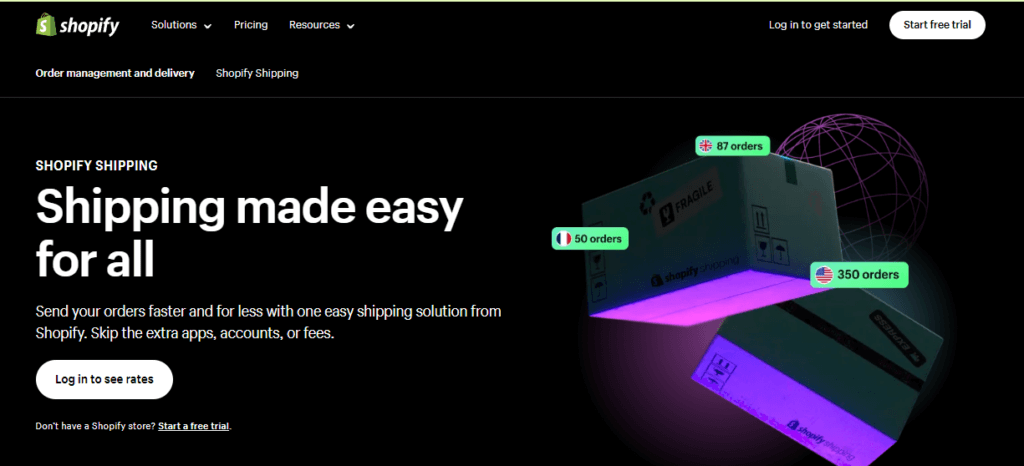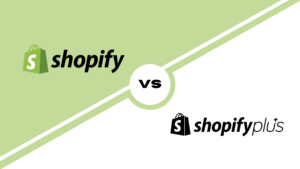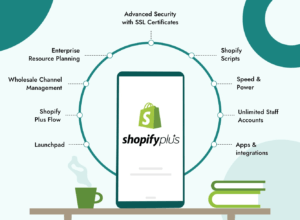In the ever-evolving landscape of eCommerce, Shopify Collabs have emerged as a pivotal strategy for brands seeking growth and innovation. Collaborations in eCommerce are not merely transactions; they are strategic alliances that open doors to new audiences, enhance product offerings, and fuel brand expansion.
Shopify, a leading eCommerce platform, recognizes the value of collaborations and provides a dynamic ecosystem for businesses to forge powerful partnerships. Key steps and insights are needed to master successful Shopify Collabs.

In this blog post, we’ll dive deep into the world of Shopify collabs, exploring their definition, the profound significance they hold in eCommerce, and a comprehensive overview of what you can expect to discover in the following sections.
Benefits of Shopify Collaborations
Shopify Collabs offer a myriad of advantages that can significantly impact your eCommerce business. Here are some key benefits to consider:
- Increased Brand Exposure: Shopify Collabs provide an excellent opportunity to showcase your brand to a wider audience. By partnering with other businesses or influencers, you can tap into their existing customer base, exposing your products or services to potential customers who may not have discovered your brand otherwise.
- Expanding Your Product Range: Shopify Collabs often involve creating unique products or offerings that combine the strengths and expertise of both parties. This can lead to the development of new, innovative products that can diversify your product range and attract a broader customer base.
- Access to a Broader Audience: One of the most significant advantages of collaborations is access to a larger and more diverse audience. Your partner’s followers or customers may have different interests, preferences, and demographics than your current audience, allowing you to reach new market segments.
- Building Trust and Credibility: Collaborating with reputable brands or influencers can enhance your own brand’s trustworthiness and credibility. Customers may be more inclined to trust your products or services when they see you associated with established and respected names in your industry.
Types of Shopify Collaborations
Shopify collabs come in various forms, each tailored to achieve specific objectives and target different aspects of your business. Here are some common types of Shopify collaborations:
- Influencer Partnerships: Partnering with influencers in your niche can be a powerful way to reach a larger and engaged audience. Influencers can promote your products or services to their followers, leveraging their trust and influence to boost your brand’s visibility and credibility.
- Cross-Promotions with Complementary Brands: Collaborating with brands that offer complementary products or services can open up opportunities for cross-promotions. For example, if you sell fitness apparel, you might partner with a nutritional supplement brand. Together, you can create joint marketing campaigns that benefit both brands and appeal to a broader customer base.
- Co-Branded Product Launches: Co-branded product launches involve working with another brand to develop and launch a unique product. This type of collaboration can generate excitement and anticipation among both brands’ audiences, driving sales and expanding market reach.
- Collaborative Content Creation: Content collaborations involve creating valuable content together, such as blog posts, videos, webinars, or podcasts. This content can educate, entertain, or inform your target audience while strengthening your brand’s authority and visibility.
The choice of collaboration type depends on your goals, target audience, and the nature of your eCommerce business. Some Shopify collabs may combine multiple types, creating a comprehensive approach to growth.
Here’s a chart representing the types of Shopify collabs mentioned:
| Collaboration Type | Description |
|---|---|
| Influencer Partnerships | Partnering with influencers in your niche to reach a larger and engaged audience. |
| Cross-Promotions with Complementary Brands | Collaborating with brands that offer complementary products or services to open up opportunities for cross-promotions. |
| Co-Branded Product Launches | Working with another brand to develop and launch a unique product to generate excitement and anticipation among both brand’s audiences. |
| Collaborative Content Creation | Creating valuable content together, such as blog posts, videos, webinars, or podcasts to educate, entertain, or inform your target audience. |
Certainly, here’s the content for section IV:
Finding the Right Shopify Collab Partner
In the world of Shopify collabs, finding the ideal partner is paramount to the success of your venture. It’s not just about any partnership; it’s about aligning your brand with another that resonates with your values and speaks to your target audience.
- Identifying brands or influencers that align with your values and target audience: Begin your quest by conducting thorough research. Dive into your industry and identify brands or influencers that share similar values and objectives. Look for entities that complement your products or services, rather than compete with them. The key here is alignment; a partnership should feel natural to your audience.
- Evaluating the potential for a mutually beneficial partnership: Collaboration should be a win-win scenario. Assess how a partnership could benefit both parties. Consider factors like shared audience demographics, reach, and the unique value each partner brings to the table. Keep in mind that successful collaborations are built on reciprocity and a common goal.
Remember, finding the right collaborative partner is like finding the missing piece of a puzzle; it should seamlessly fit into your brand’s narrative and enhance your eCommerce journey.
Planning and Executing a Shopify Collaboration
Planning and executing a successful Shopify collab requires careful consideration and coordination. Here are the key steps involved in this process:
Setting Clear Goals and Objectives
To begin, clearly define the goals and objectives you want to achieve through the collaboration. This could include increasing brand awareness, driving sales, expanding your customer base, or exploring new markets. By having clear goals in mind, you can align your strategies and actions accordingly throughout the collaboration.
Establishing Roles and Responsibilities
Next, determine the roles and responsibilities of each party involved in the collaboration. Clearly define who will be responsible for tasks such as creating content, managing social media promotions, tracking analytics, or handling customer inquiries. This ensures that everyone understands their specific tasks and deadlines, promoting effective collaboration and minimizing confusion.
Creating a Collaborative Marketing Strategy
Develop a collaborative marketing strategy that aligns with both parties’ objectives and target audiences. This may involve creating joint marketing campaigns, designing co-branded content, or executing cross-promotions. The key is to leverage the strengths of each brand and create synergy that benefits both organizations. Be sure to establish communication channels and set regular meetings to discuss strategy, share ideas, and track progress.
Legal Considerations and Agreements
Collaborations often require legal agreements to protect the interests of both parties. Some common considerations include:
- Confidentiality: If any sensitive information will be shared during the collaboration, it’s crucial to have a non-disclosure agreement (NDA) in place to maintain confidentiality.
- Intellectual Property: Clearly define ownership and usage rights of intellectual property, such as trademarks, logos, or any new intellectual property developed during the collaboration.
- Liability and Indemnification: Identify responsibilities and potential risks associated with the collaboration, and establish terms for liability and indemnification to protect both parties.
- Termination and Dispute Resolution: Include provisions that outline terms for terminating the collaboration and mechanisms for resolving any disputes that may arise.
Consult with legal professionals experienced in collaboration agreements to ensure all legal aspects are adequately addressed.
Measuring the Success of Shopify Collabs
Measuring the success of your Shopify collabs is essential to evaluate their effectiveness and make data-driven decisions for future partnerships. Here are the key steps involved in measuring collaboration success:
Key Performance Indicators (KPIs)
Identify relevant Key Performance Indicators (KPIs) that align with your collaboration goals. These KPIs help you measure and track the impact of the collaboration. Some common KPIs for Shopify collaborations include:
- Sales Revenue: Measure the increase in sales attributed to the collaboration. This could be done by tracking the direct sales generated from the collaboration or by comparing the sales performance during the collaboration period to previous periods.
- Website Traffic: Monitor the increase in website traffic during the collaboration. This can be measured using web analytics tools or by tracking the number of visitors referred from the collaboration partner’s platforms.
- Social Engagement: Measure the impact on social media engagement metrics such as likes, comments, shares, and followers gained. This indicates the level of audience engagement and brand exposure generated through the collaboration.
Tracking and Analyzing Impact
Utilize tracking tools and analytics to monitor the impact of the collaboration. This may involve:
- Sales Tracking: Utilize Shopify’s built-in analytics or third-party tools to track sales directly attributed to the collaboration. This data helps evaluate the collaboration’s revenue impact.
- Web Analytics: Use tools like Google Analytics to track website traffic and identify the sources of traffic from the collaboration partner’s platforms. Analyze metrics such as bounce rate, session duration, and conversion rate to assess the collaboration’s impact on website engagement and conversion.
- Social Media Monitoring: Monitor social media metrics to track the collaboration’s impact on social engagement. Analyze engagement rate, reach, and follower growth to understand the collaboration’s influence on brand exposure and audience engagement.

Adjusting Strategies Based on Results
Evaluate the collected data and insights to determine the success of the collaboration and identify areas for improvement. Adjust your strategies based on the results to optimize future collaborations. For example:
- If a particular influencer partnership drives significant sales but has minimal impact on website traffic, consider optimizing the collaboration to drive both sales and traffic.
- If co-branded content generates high engagement on social media but doesn’t translate into significant sales, think about strategies to improve conversion rates and encourage purchase.
Utilize the data-driven insights to refine your collaboration strategies, adjust targeting, messaging, or partnership selection, and enhance the overall effectiveness of your collaborations.
KPI Chart Example:
Here’s an example of a chart representing the KPIs for measuring Shopify collab success:
| KPI | Description |
|---|---|
| Sales Revenue | Measure the increase in sales revenue attributed to the collaboration. |
| Website Traffic | Monitor the increase in website traffic generated by the collaboration. |
| Social Engagement | Measure the impact on social media engagement metrics like likes, comments, shares, and followers gained. |
Certainly, let’s provide more detail for each point in section VIII:
Challenges and How to Overcome Them
While Shopify collabs can bring numerous benefits, they are not without their challenges. Understanding and addressing these challenges is vital to maintaining a positive and productive partnership.
Common obstacles in Shopify collabs
Collaborating with other brands or influencers on your Shopify platform can bring numerous advantages, but it’s not without its challenges. Understanding these common obstacles is essential for navigating the complexities of collaborative efforts successfully. In this section, we’ll explore the challenges you might encounter and provide strategies for overcoming them, ensuring your Shopify collaboration remains on track and productive.
- Misalignment of goals: Misaligned goals can lead to confusion and conflicts down the road. To overcome this challenge, start by clearly defining the objectives of the collaboration. Ensure that both partners have a shared understanding of what they want to achieve, whether it’s increased sales, brand awareness, or product development.
- Communication breakdown: Effective communication is the backbone of any successful partnership. When communication breaks down, it can result in misunderstandings, missed opportunities, and frustration. To address this, establish a communication plan that outlines how often and through which channels you’ll communicate. Regular check-ins, updates, and the use of collaboration tools like project management software or shared calendars can help keep communication flowing.
- Resource disparities: It’s common for partners in a collaboration to have different levels of resources, whether it’s budget, manpower, or marketing reach. To overcome resource disparities, discuss upfront how resources will be allocated and shared. Determine who will be responsible for what tasks and agree on a fair distribution of costs or efforts. This can help prevent resentment or feelings of imbalance.
- Competing priorities: In today’s fast-paced business environment, it’s easy for competing priorities to emerge. Other commitments, projects, or cri=’]0dfes can divert attention away from the collaboration, causing delays or neglect. To mitigate this challenge, establish a project timeline with milestones and deadlines. Regularly review progress to ensure that the collaboration remains a priority and that both parties stay committed.
- Lack of accountability: Without clear roles and responsibilities, tasks can slip through the cracks, leading to missed opportunities and frustration. Define the roles and responsibilities of each partner, outlining who is responsible for what tasks and deliverables. Establish a system for tracking progress and holding each other accountable.
Strategies for overcoming challenges and maintaining a positive partnership
Certainly! Here’s a visual representation of the strategies for overcoming challenges and maintaining a positive partnership:
Strategies for Overcoming Challenges and Maintaining a Positive Partnership
| Strategy | Description |
|---|---|
| Set Clear Goals and Expectations | Start the collaboration with a detailed discussion of goals and expectations. Document these in a written agreement or memorandum of understanding (MOU). Include specifics like project scope, deadlines, responsibilities, and desired outcomes. Having a clear roadmap helps prevent misunderstandings. |
| Establish a Communication Plan | Create a communication plan that outlines the frequency and method of communication. Decide how often you’ll hold meetings or check-ins and which channels (email, video calls, project management tools) you’ll use. Regular, open, and honest communication can help address issues promptly and keep the collaboration on track. |
| Define Roles and Responsibilities | Clearly define the roles and responsibilities of each partner. Use a role matrix or a responsibility assignment matrix (RAM) to document who is responsible for which tasks. This clarity ensures that everyone knows their responsibilities and can hold each other accountable. |
| Allocate Resources Fairly | Resource allocation should be equitable and based on each partner’s strengths and limitations. Discuss how resources such as finances, manpower, and marketing reach will be shared. Ensure that the division is fair and aligns with the agreed-upon goals. |
| Stay Adaptable | Challenges are a natural part of any collaboration. Be prepared to adjust your strategy if unforeseen issues arise. Flexibility is key to navigating obstacles successfully. Regularly review your progress and make changes as needed to keep the collaboration on track. |
Certainly! Here’s the conclusion section:
Final Thoughts
In conclusion, Shopify collaborations offer a multitude of benefits for eCommerce businesses. They provide opportunities for increased brand exposure, expanding product ranges, accessing broader audiences, and building trust and credibility in the competitive digital landscape. As eCommerce continues to evolve, embracing collaboration opportunities becomes essential for sustainable growth and success.
We encourage eCommerce businesses to explore the world of collaborations and unlock the countless possibilities they offer. By finding the right partners, setting clear goals, and overcoming challenges together, you can elevate your brand and reach new heights in the eCommerce sphere.
At Mapplinks, we understand the power of Shopify collabs, and we’re here to help you navigate this exciting journey. If you’re ready to embark on collaborative ventures or need expert guidance, don’t hesitate to reach out to us.
Together, we can turn your eCommerce aspirations into thriving realities. Contact us and let’s collaborate for success.



